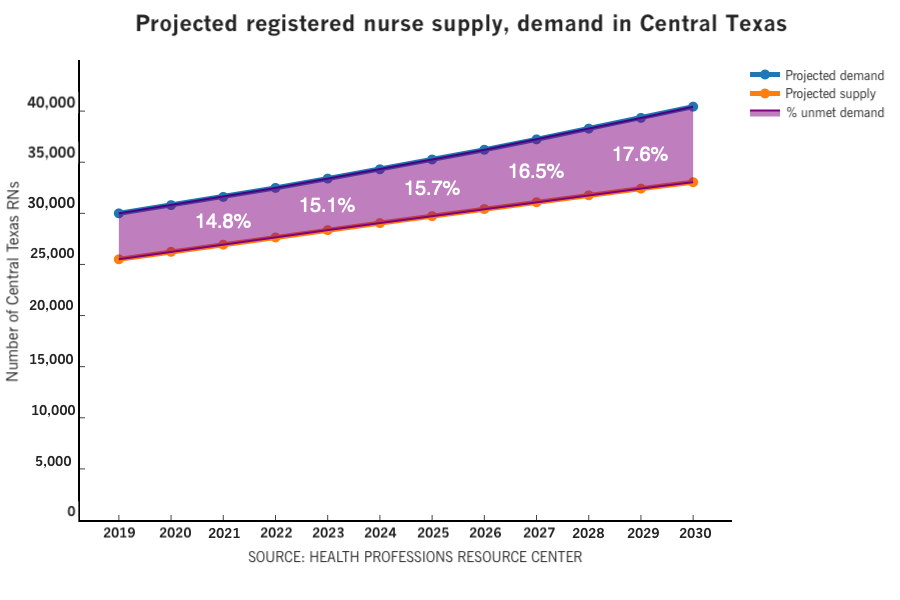School of Nursing lacks resources to accept all qualified applicants under Texas nursing shortage
December 15, 2021
Editor’s Note: This article first appeared as part of the November 16 flipbook.
Hospitals across the state are facing a nursing shortage due in part to education programs like UT’s School of Nursing lacking the space and availability to train potential nurses.
In September, the Austin area had 1,468 unfilled jobs for registered nurses, while Texas had 21,505 nursing vacancies, according to the Texas Workforce Commission.
Leigh Goldstein, a clinical nursing assistant professor, said while there is an abundance of nursing program applicants to meet the demand, Texas’ nursing programs and clinical spaces where students receive hands-on training are limited in how many applicants they can accept. Goldstein said another factor in the shortage is that nurses are offered more compensation by travel nursing agencies than at Texas hospitals.
From 2011 to 2019, UT did not offer 568 of the 1,724 qualified applicants admission to the program, according to an annual University report of the state’s nursing programs obtained by The Daily Texan. In 2020, UT’s program said the number one reason qualified applicants were rejected was because of the “lack of clinical space” to train nurses.
“There’s a lot of competition for space within the clinical facilities, especially in the specialty areas like pediatrics and maternity,” Goldstein said. “The new graduate nurses often take priority in the hospitals over students coming in to learn.”
Due to the shortages, the Texas Board of Nursing has allowed programs to substitute up to 50% of traditional clinical hours with simulated labs. However, Alyson Wong, a nursing senior and president of the UT Nursing Students’ Association, said simulated clinical experiences can not fully replace in-person training.
“We did have one week where we did an online clinical, and that definitely did not give the same experience and clinical work,” Wong said.
UT also cited a lack of faculty positions as another reason applicants could not be accepted. From 2011 to 2020, the number of full-time and part-time faculty employed by the School of Nursing decreased from 60 to 44, according to the report.
Goldstein said many potential professors choose higher-paying jobs in the private sector.
“There’s a lot of competition (with) the private sector versus the academic setting—there’s just no way the academic setting can compete,” Goldstein said.
Goldstein said the state will have to increase funding opportunities to UT’s nursing program to convince more nurses to become educators.
“We have a faculty nurse loan program … that does support a nurse through their graduate program, in return for an agreement (to) teach after they’re finished,” Goldstein said. “There are also some other funding opportunities, but not as many as we would need.”












